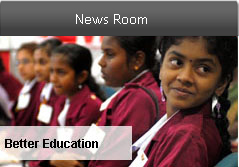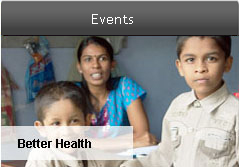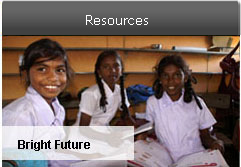 |
 |
 |
 |
CHILD RIGHTS AND CHILD PROTECTION
|
In 1989, world leaders decided that children needed a special convention just for them because people under 18 years of age often need special care and protection that adults did not need. The leaders wanted to make sure that the world recognized that children have human rights too. The Convention on the Rights of the Child is the first legally binding international instrument to incorporate the full range of human rightsócivil, cultural, economic, political and social rights. The Convention sets out these rights in 54 articles and two Optional Protocols. It spells out the basic human rights that children everywhere have: the right to survival; to develop to the fullest; to protection from harmful influences, abuse and exploitation; and to participate fully in family, cultural and social life. The four core principles of the Convention are non- discrimination; devotion to the best interests of the child; the right to life, survival and development; and respect for the views of the child. Every right spelled out in the Convention is inherent to the human dignity and harmonious development of every child. The Convention protects children's rights by setting standards in health care; education; legal, civil and social services. By agreeing to undertake the obligations of the Convention (by ratifying or acceding to it), national governments have committed themselves to protecting and ensuring children's rights and they have agreed to hold themselves accountable for this commitment before the international community. States parties to the Convention are obliged to develop and undertake all actions and policies in the light of the best interests of the child. The Convention on the Rights of the Child sets out the rights that must be realized for children to develop their full potential, free from hunger and want, neglect and abuse. It reflects a new vision of the child. Children are neither the property of their parents nor are they helpless objects of charity. They are human beings and are the subject of their own rights. The Convention offers a vision of the child as an individual and as a member of a family and community, with rights and responsibilities appropriate to his or her age and stage of development. By recognizing children's rights in this way, the Convention firmly sets the focus on the whole child. The Convention and its acceptance by so many countries has heightened recognition of the fundamental human dignity of all children and the urgency of ensuring their well-being and development. The Convention makes clear the idea that a basic quality of life should be the right of all children, rather than a privilege enjoyed by a few. In Sri Lanka, various arrangements are in place to uphold child rights and protect children from various forms of abuse. NCPA (National Child Protection Authority) and Department of Probation and Child Care Services are taking a leading role to achieve these objectives. AEDU- CHILD PROTECTION POLICY (GUIDELINES) These guidelines are issued for those who work with children under the AEDU-Foster Care Programme. In addition the donors, donor- organisations and sponsors supporting Foster Care Programme are expected to abide by the same guidelines. |
| Copyright © 2011 aedu-international.org. All Rights Reserved. |


